Why Sand Is the Best Bedding for Your Chicken Coop + Run
Discover why sand is the ideal bedding for your chicken coop, offering easy maintenance, odor control, and happy chickens.
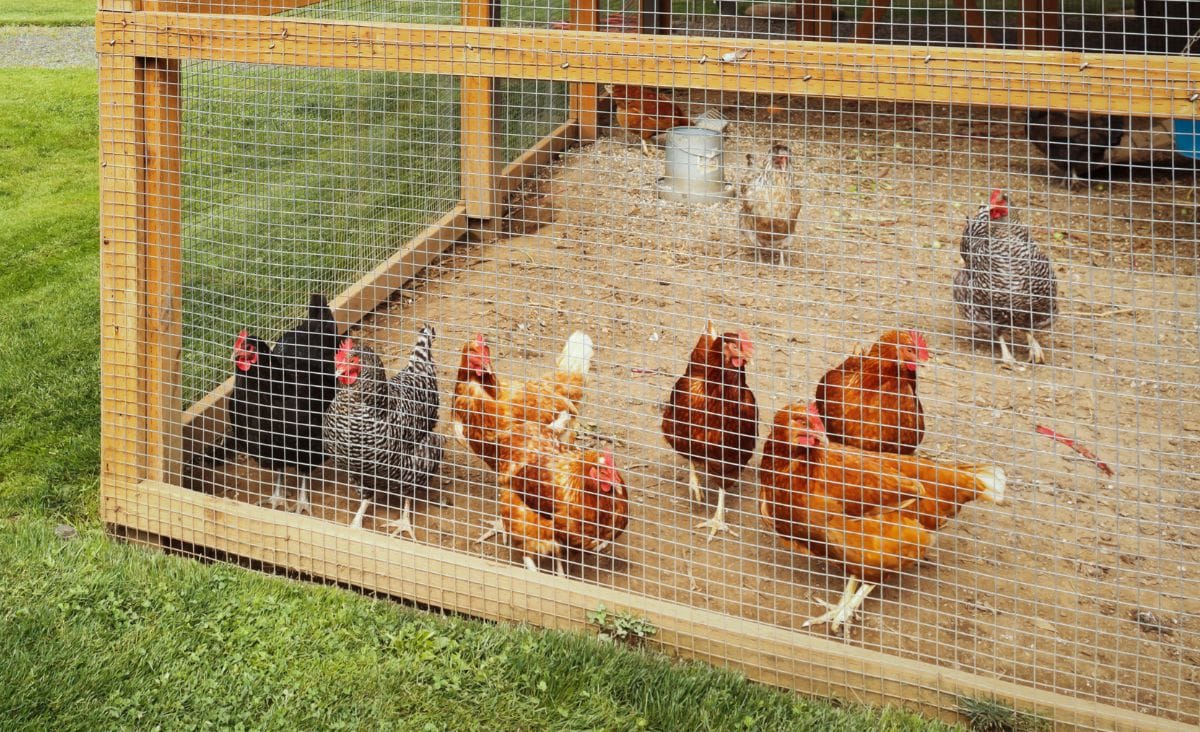
If you’re new to chickens, you might be wondering what to put on the floor of your chicken coop. There are a lot of great options out there, but I have a personal favorite.
Using sand in the chicken coop is the answer to an obsessive person’s dreams. Close your eyes and imagine: beautifully manicured chicken feet (free of poo), zen garden furrows on the ground, and everything staying in its place instead of blowing around whenever a wing is flapped. Imagine walking in and smelling… nothing.
Sand, my dear readers, is the answer.
I started using sand in the chicken coop and run in 2013. The birds had decimated the lawn, leaving treacherous mud in its wake. Getting to the water station without slipping in the muck was becoming an Olympic feat. As usual, I turned to BackYardChickens.com. People were singing the praises of using sand to help with drainage and to replace more traditional bedding options.
Traditional bedding, like pine shavings, can be a nightmare in a chicken run because it is exposed to the elements. It can get soggy, moldy, or just smell terrible. The sand suffers from none of those problems. There are, however, things you must do so that your sand performs well.
Choosing the Right Sand
In order to keep your chickens healthy and happy, as well as the coop clean and odor-free, it’s important to use the correct kind of sand. How well sand works in the coop is heavily dependent on factors like its texture, composition, and color.
Understanding Sand Types
Bank Run Sand
Bank run sand has a wide range of particle sizes, from very fine dust to very small pebbles. Because of this, bank run sand is great for chicken coops that get a lot of moisture. The bigger particles make it less likely that the sand will compact, which improves airflow and drainage. This is the best choice for sand in most coops.
Construction Sand
Like bank run sand, construction sand comes in a range of particle sizes and is commonly used in construction projects. It is long-lasting, has excellent drainage, and will not break the bank. To keep the chickens dry and comfortable in coops that are located in places with high humidity or heavy rainfall, construction sand is a great choice.
All-Purpose Sand
As its name implies, all-purpose sand is a more adaptable choice that excels in a range of applications. The fact that its particles are usually more uniform in size than those of bank run or construction sand is both an advantage and a disadvantage. If other types of sand are not easily accessible, this one will do in a pinch, though it will not drain as well.
Can I use play sand in my chicken coop?
Playsand and sandbox sand floats, and you will regret using it.
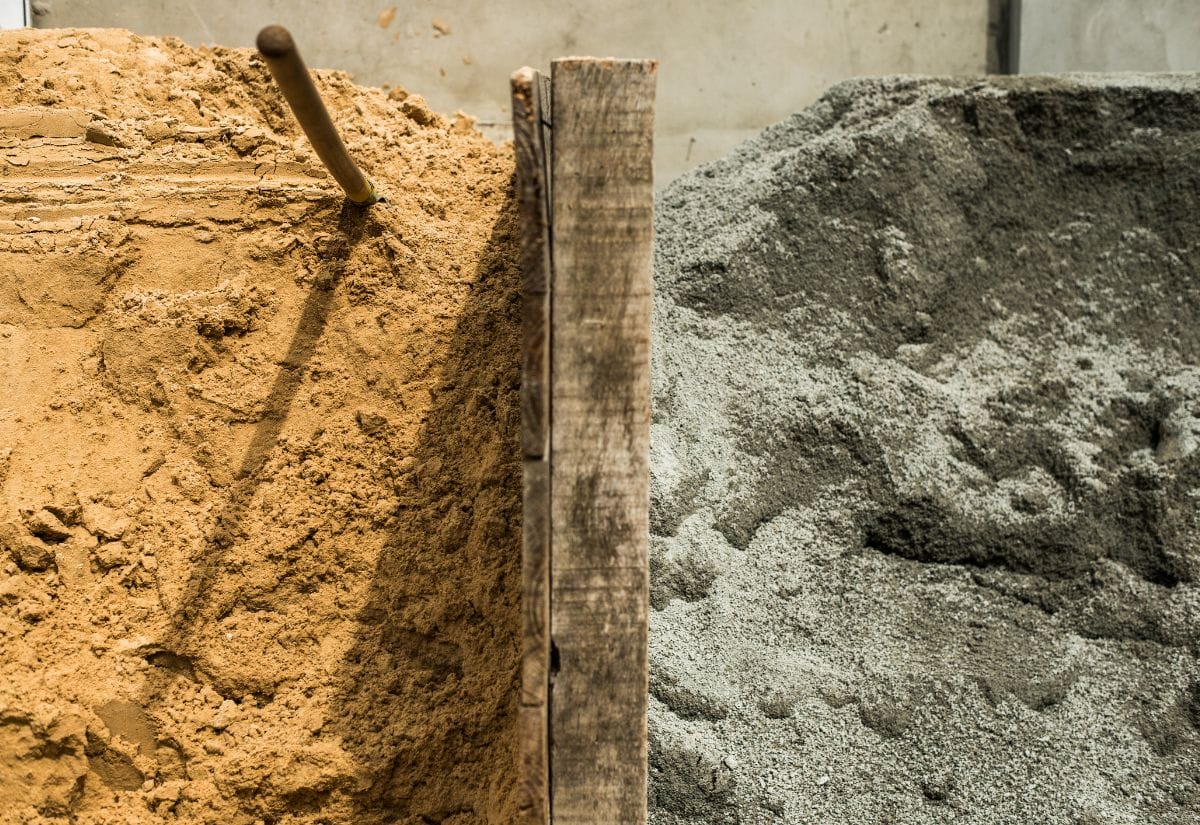
Accessibility and Cost
Sometimes, the best sand for your coop is what’s readily available and cost-effective. Transporting large quantities of sand can be expensive, so sourcing sand locally can influence your choice.
Tip: I have found sand at home improvement stores, landscaping supply stores, and even directly from quarries and sand suppliers. There may also be different types of sand that are good for chicken coops at garden centers and stores that sell building supplies.
No matter which type of sand you choose, make sure it’s free from contaminants and sharp objects that could harm your chickens.
How deep does the sand need to be in the coop and run?
A thin layer will not give you the results you want. Chicken manure will shift below the ground and stink to high heaven. In the coop, you can get away with 3-4″ so long as the coop is raised off the ground with a plywood or lined floor. If your coop floor is the ground or you are putting sand in an enclosed run, 6-8″ deep is ideal for drainage. If your coop is in an area that tends to be boggy/soggy, 2-3″ of gravel laid down before adding sand can make a world of difference.
Even More Pros
In addition to the “pros” already mentioned, here are a few more reasons to choose sand for your chicken coop:
- Cost-effective. For anywhere from $10-$20 you can get an entire truckload of sand from a quarry.
- It creates a natural dust bath area and provides all the grit you could need. That’s two less things you need to worry about.
- Stays dry. It quickly dries poo and doesn’t retain moisture, so you don’t need to worry about mold or bugs.
- It soaks up and gets rid of smells, keeping the air fresh and the coop smelling clean.
- Stays cool in the summer, even during the biggest heat waves. It also preserves heat in the winter.
- Conserves feed. Pelleted feed stays on the surface and can easily be found by hungry birds.
- It makes composting easy! There is no bedding that needs to be broken down.
- Is aesthetically pleasing. You can even create a nice zen garden feel (though the birds may not appreciate your efforts and destroy it quickly).
- Reduces the chances of frostbite during the winter because there is no moisture to build up.
- The soft, even surface prevents bumblefoot and other foot issues by reducing exposure to hard, uneven, or damp flooring.
Maintenance
Maintenance is super easy, too!
- Weekly: Sift out manure and turn the sand. A modified stall rake makes a great sand sifter. Just use zip ties to attach some 1/4″ hardware cloth. Doing this regularly prevents the buildup of ammonia and keeps the coop smelling fresh.
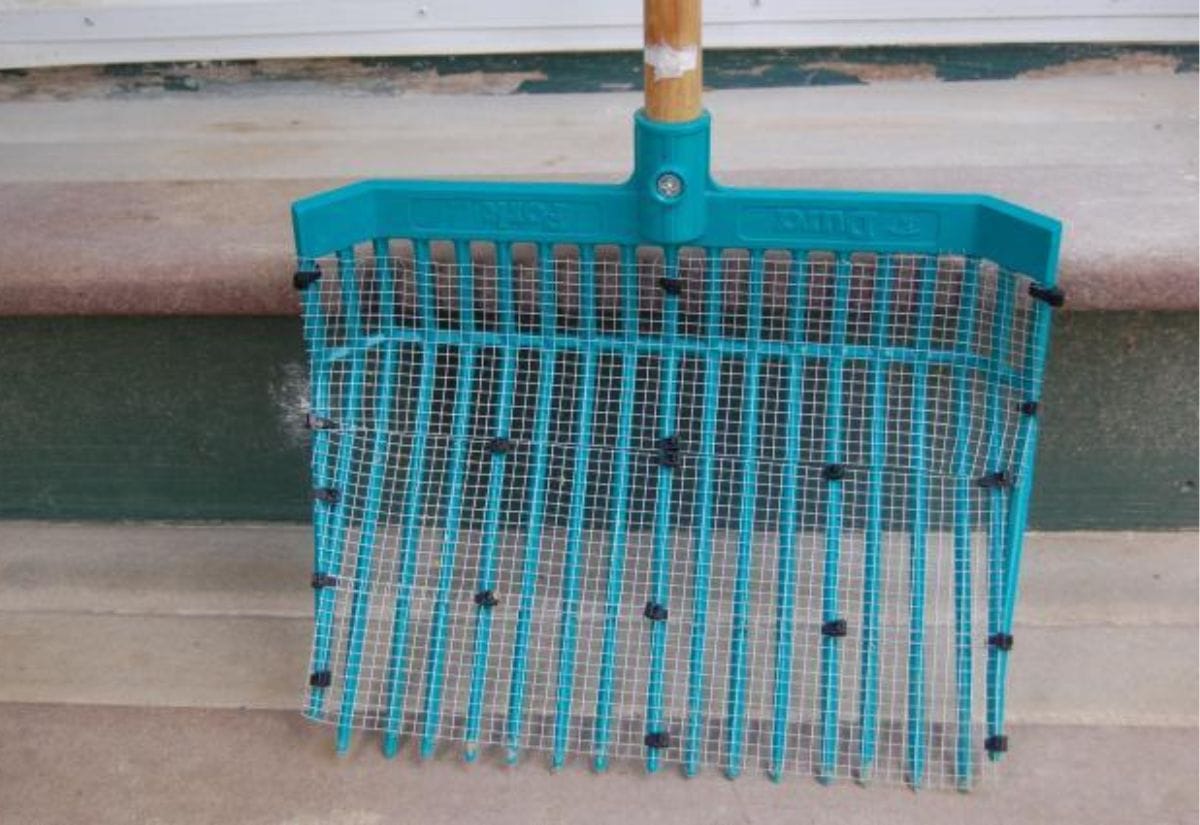
- Bi-Annually: Twice a year, I add some pelletized lime or sweet PDZ to the run to help maintain a fresh-smelling coop. These materials also help absorb excess moisture. Add more sand as needed to replace what has been removed during cleaning or what has compacted over time.
- Annually: Once a year, I completely clean out the coop and add new sand. This is the perfect time to make any necessary repairs or modifications.
Tip: I put our used sand with chicken manure in our compost pile. The waste will break down over time and eventually turn into nutrient-rich compost. The sand is a huge benefit to people with clay soils because it helps with aeration and drainage.
- Seasonally: In the winter, I throw in some ash from the woodstove, and in the summer, I sprinkle in some DE (diatomaceous earth). Both of these control mites, lice, and other pests.
Like any bedding option, neglected bedding can cause health issues for your birds. Proper cleaning is important to your birds’ health.
That’s it!
Troubleshooting Common Issues
Even with its many benefits, using sand in chicken coops can sometimes present challenges. Here are solutions to some common issues that you might encounter:
Odor Problems
- Cause: Either inadequate cleaning or bad drainage.
- Solution: Refresh areas under roosts more frequently and clean up droppings more often as a solution. Make sure the depth of the sand layer is sufficient to allow for adequate drainage. Pelletized lime or Sweet PDZ can be added to neutralize odors.
Wet or Compacted Sand
- Cause: Heavy rainfall, lack of drainage, or not enough sand.
- Solution: Add a layer of gravel under the sand to improve drainage, particularly in areas that tend to get wet. Turn the sand with a rake on a regular basis to keep it from compacting and speed up its drying time.
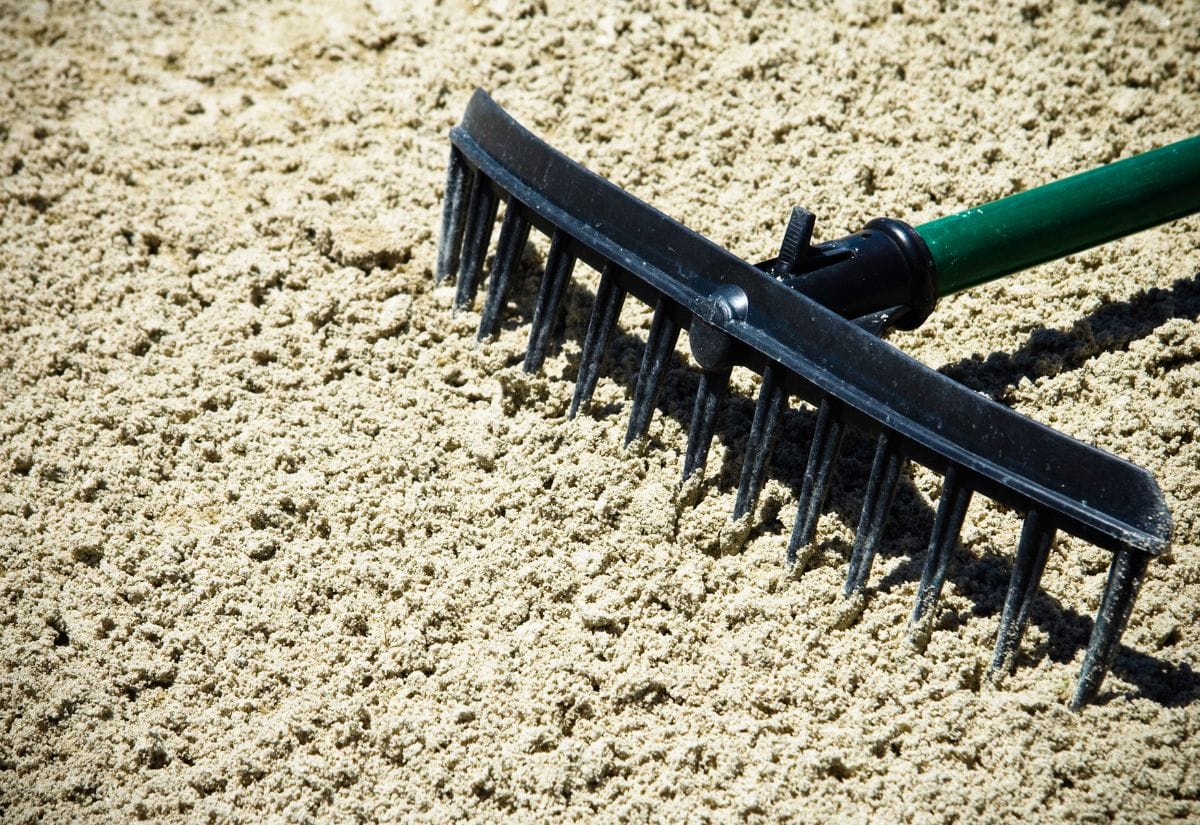
Pest Infestations
- Cause: Damp conditions or not using preventive measures.
- Solution: Maintain dry conditions in the coop, as pests thrive in moisture. Use food-grade diatomaceous earth in the sand to deter pests, but apply it sparingly to avoid respiratory issues in chickens.
Difficulty in Cleaning
- Cause: Using the wrong tools or techniques.
- Solution: Use a modified stall rake or a homemade sifter designed for sand to make cleaning easier. You can drastically cut down on the amount of work needed if you clean regularly and thoroughly using the right tools.
Sand Too Hot or Cold
- Cause: Extreme temperatures affecting the surface layer of the sand.
- Solution: In hot climates, provide shaded areas within the coop to protect sand from direct sunlight. During cold months, add a thicker layer of sand to insulate.
Sand in the Brooder
Sand works great in a brooder as well. It holds the heat so the chicks stay warm, and it doesn’t get tracked into the water dishes (quite as easily). Sand also acts as a grit for the chicks, so you can offer them treats without worrying about binding.
Because sand can cause impaction in tiny chicks, it is wise to wait for two or three days after hatching before using it. This will give the chicks time to figure out what and where food is. Often, I will set up the brooder with sand before the chicks arrive and simply lay paper towels over it for the first few days. Once it seems like the chicks have figured things out, I’ll remove the paper towels. You can see how I set up my brooder for all our poultry.
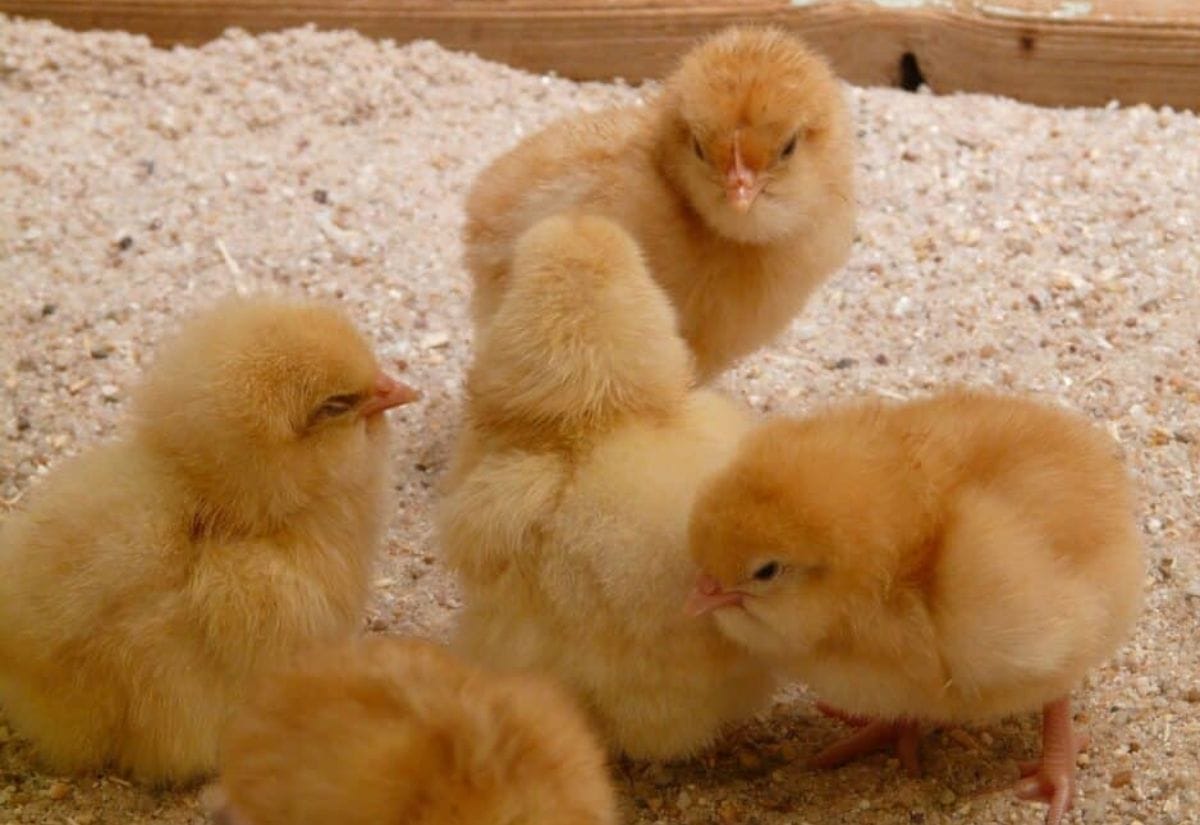
Frequently Asked Questions
Finding the right chicken coop bedding is only the first step in making your backyard flock happy and healthy. Go further into improving their health by learning about the vital role that natural remedies can play. In addition, find out what kinds of plants can enhance their environment safely by learning about the variety of plants that are chicken-safe. Learn the basics of coop design that combine form and function to make your coop more than just a place to keep your chickens; make it a sanctuary. Also, be sure your feathered friends are well-prepared for winter by learning how to keep them warm and comfortable as the weather turns colder.
If you’ve found value in this blog post and enjoyed reading it, why not share it with your Pinterest community? Pin the image below and spread the love!
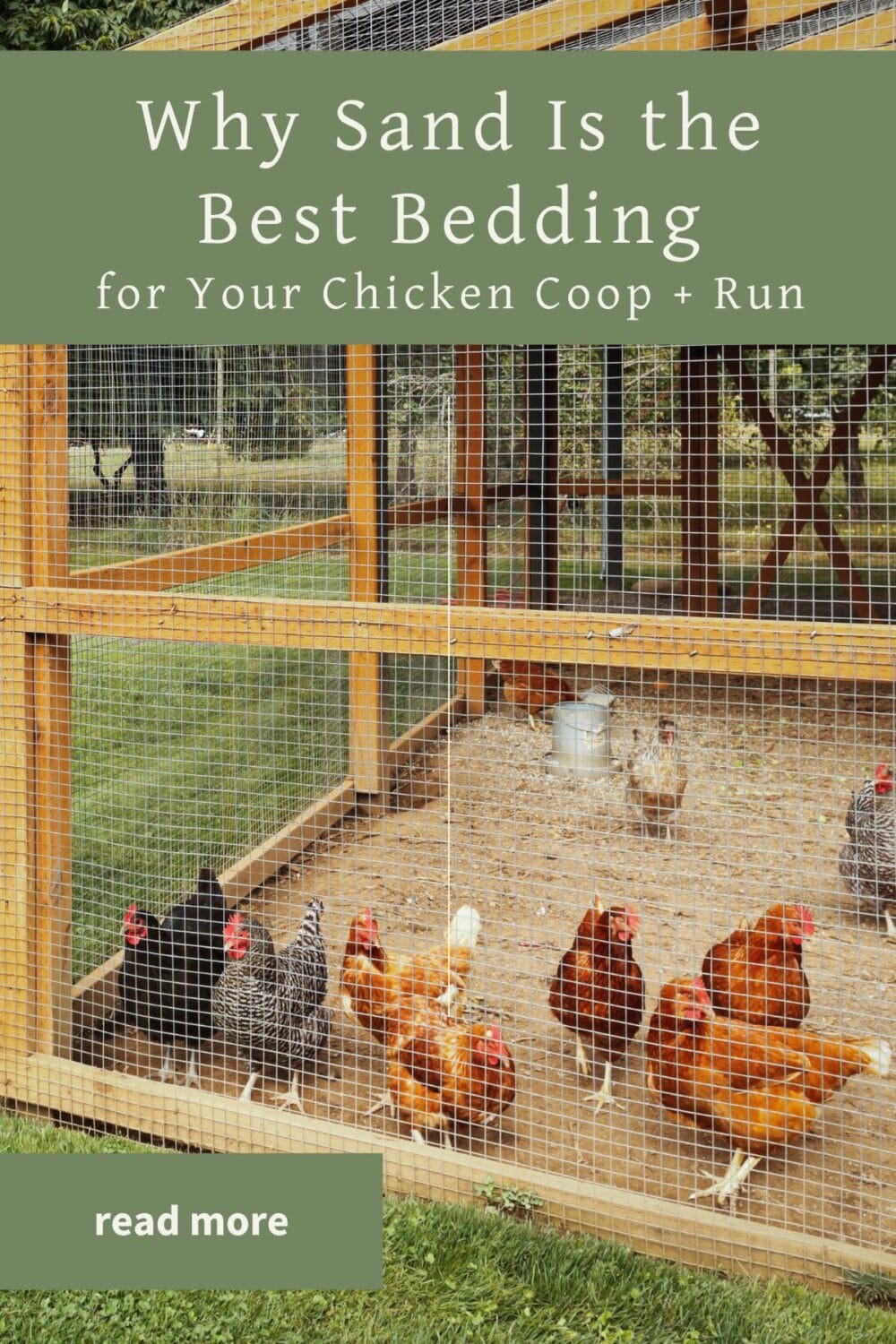
There are several great reasons to use sand as chicken coop bedding, including the fact that it promotes great foot health, helps with moisture management, and significantly reduces odors. Incredibly affordable and requiring little in the way of upkeep, it is the perfect option for all homesteaders. The advantages and adaptability of sand make it an obvious choice as a bedding for chickens, regardless of whether you are working with a small backyard flock or a bigger farm.
When you add sand to your chicken coop, you are creating an environment that is simpler, cleaner, and better for the chickens’ health. Your hens will be happier and healthier as a result.
Have you tried sand in your chicken coop or run? What did you think?

